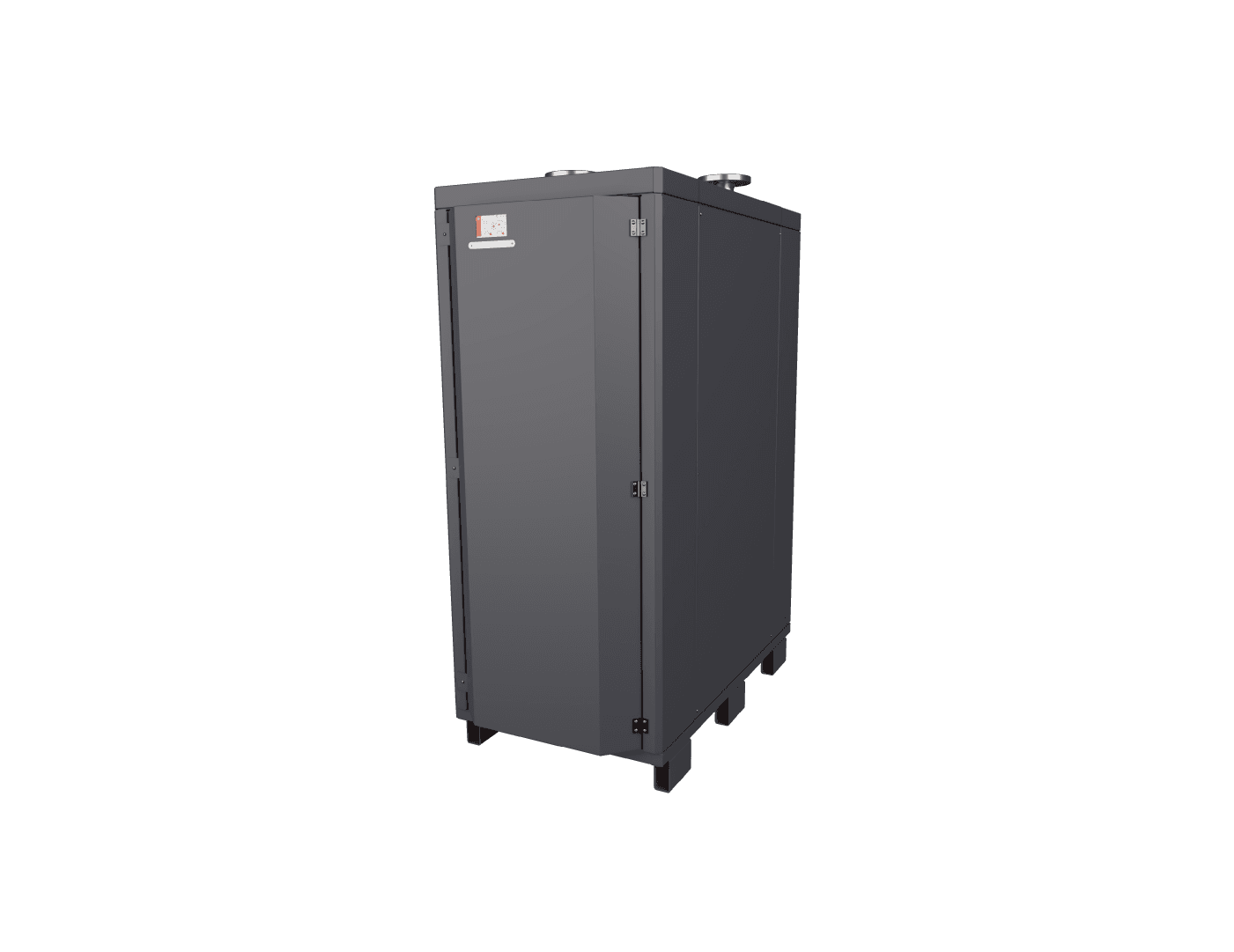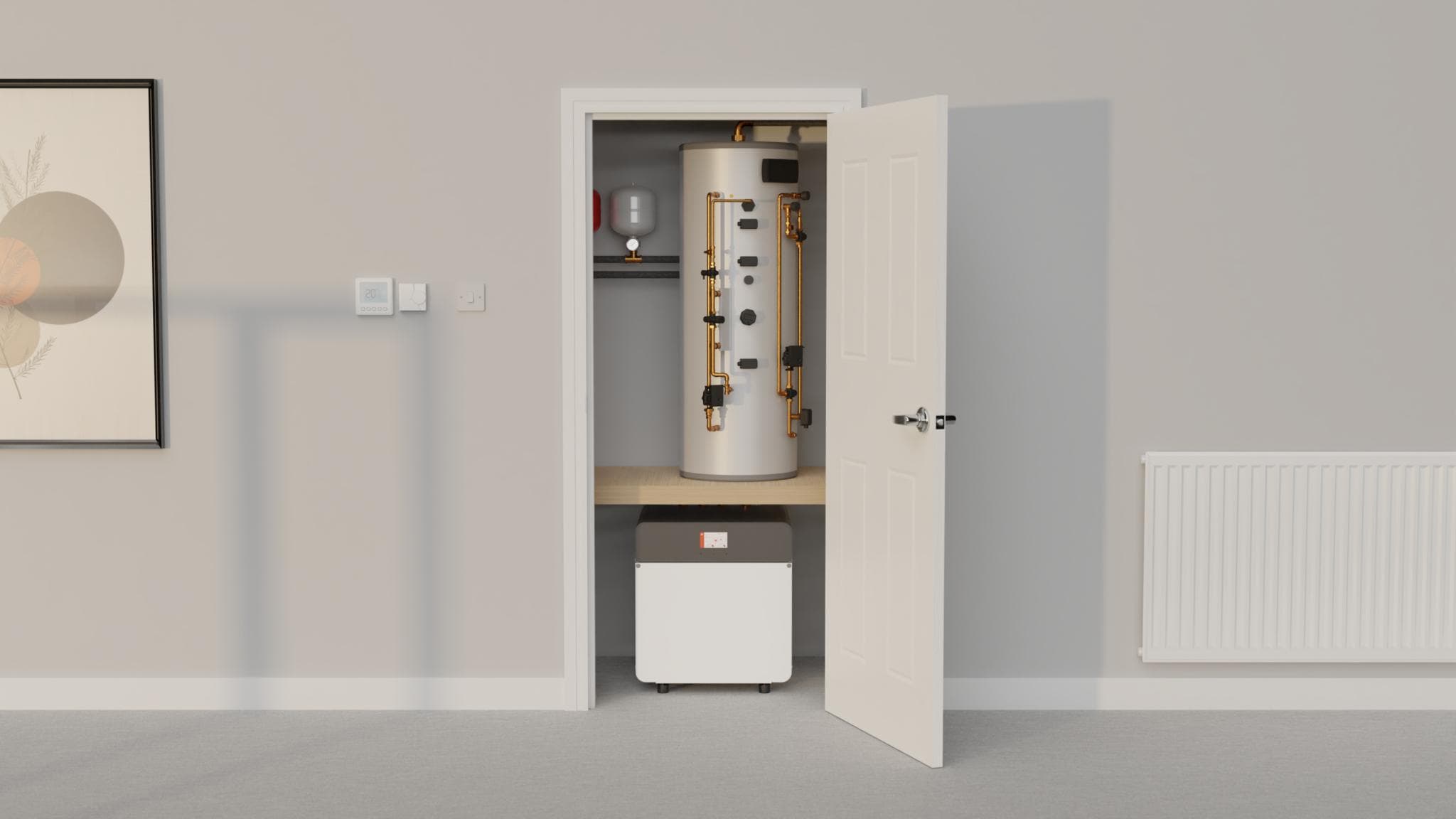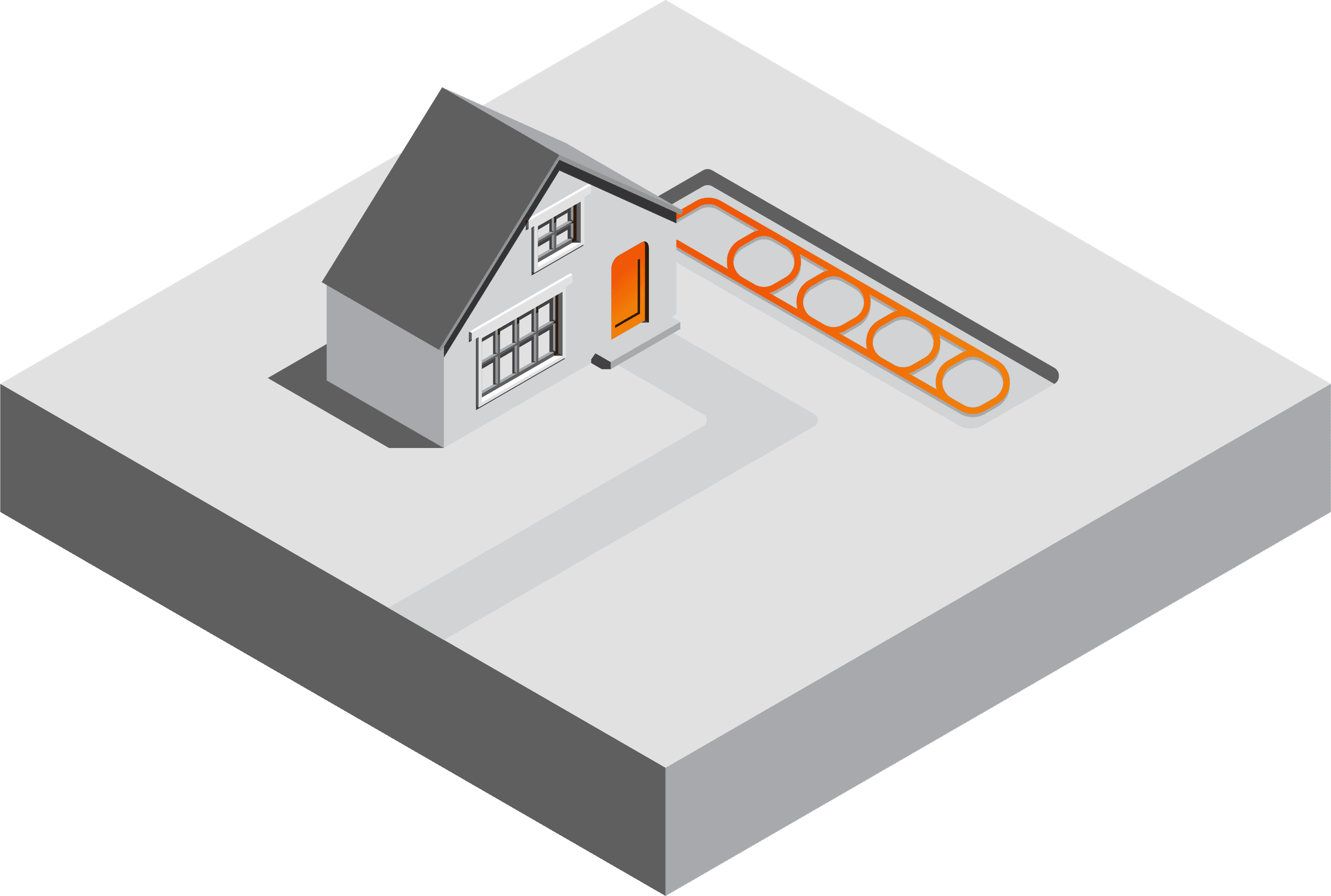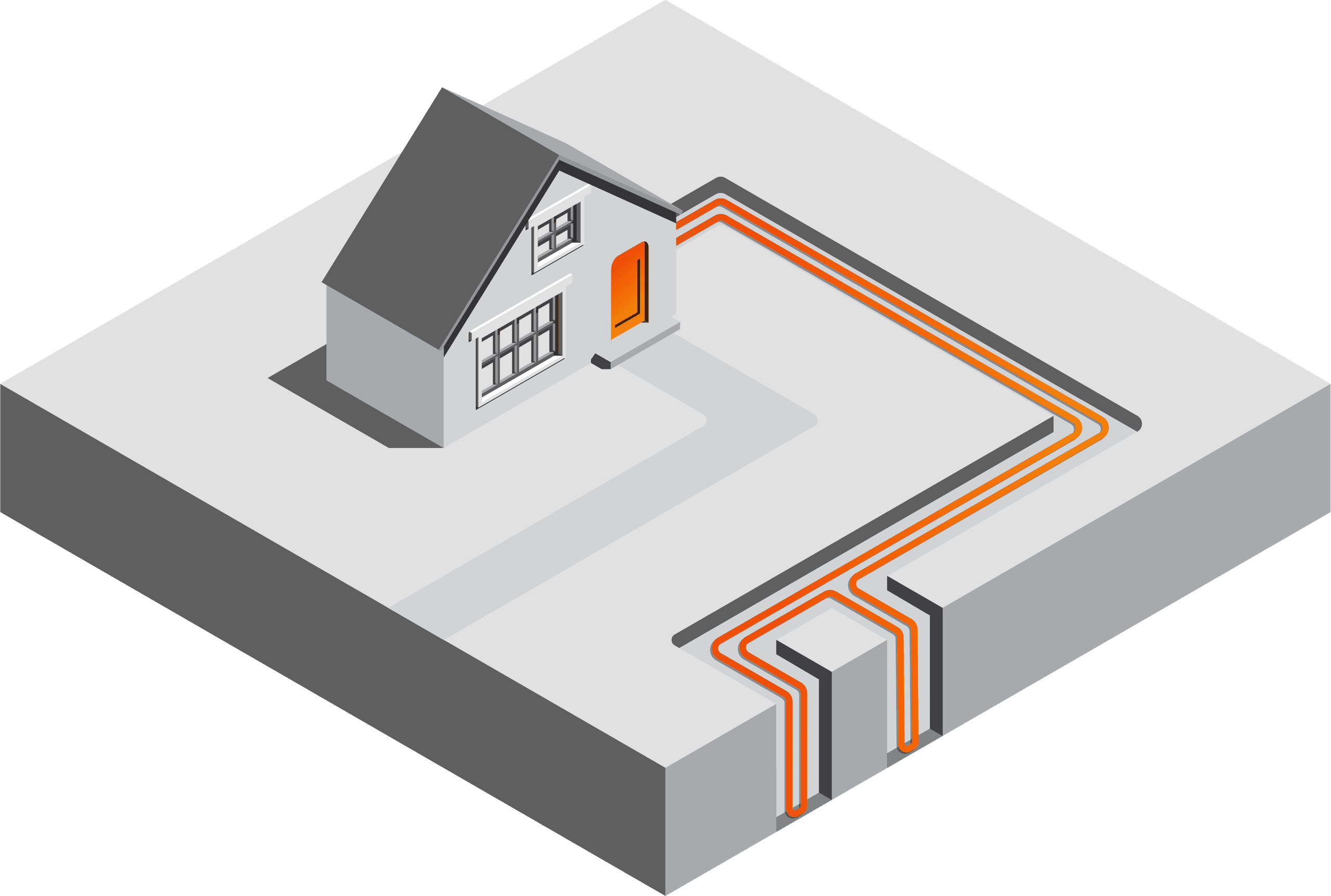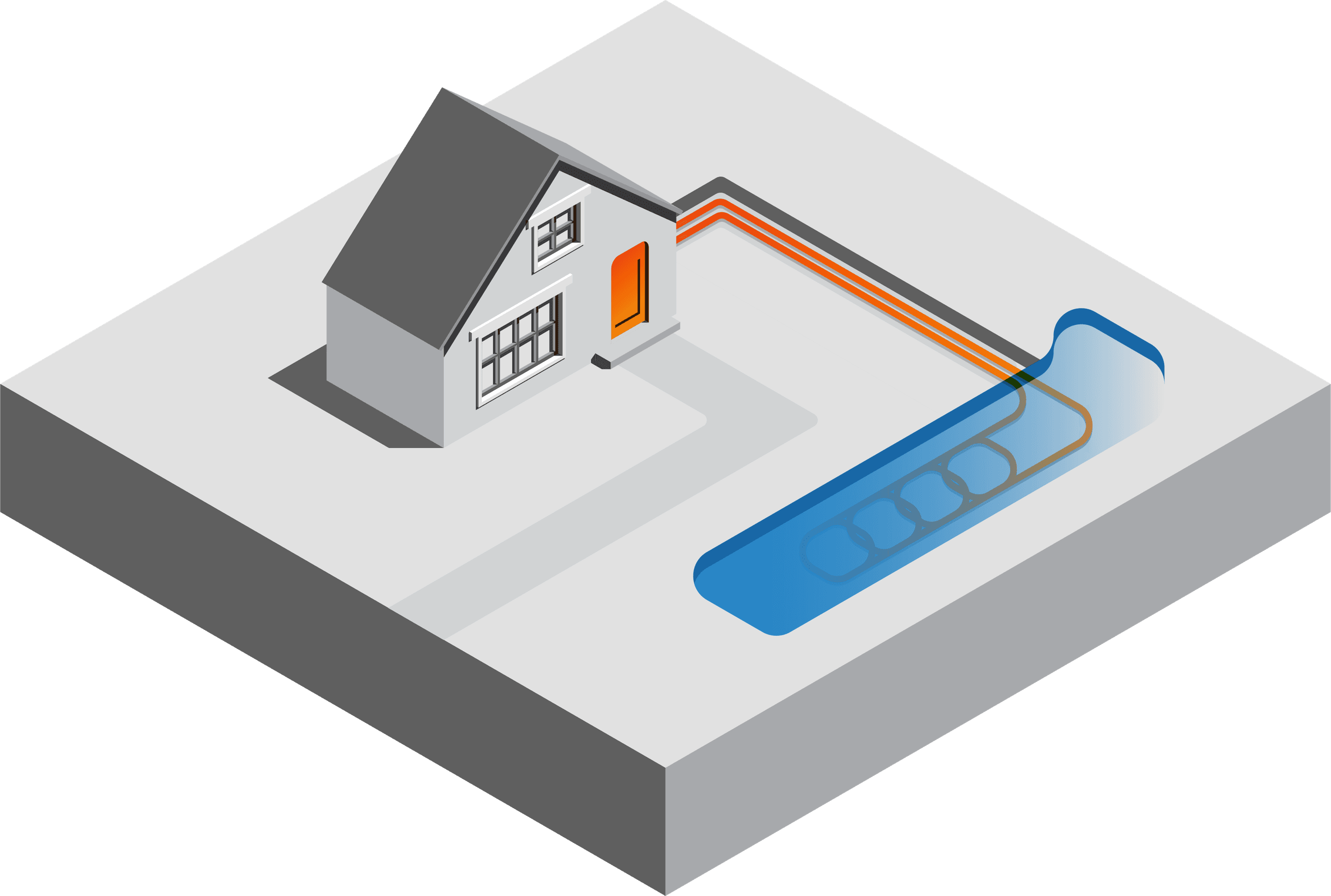Kensa Q technical data
Nominal thermal kW rating
83
Part number
Q80-MAK
MCS Approved
Not required as outside of scope
Performance data - rated heating output at B0/W35 BS EN14511
Power consumption (kW)
20.5
Co-efficient of Performance (COP)*
3.94
Immersion heater output Kensa heat pumps do not feature back-up electric immersion heaters**
ENA Connect & Notify approval
Brine (primary) based on 0°C in / -4°C out
Installer configurable
Design flow rate l/min
16.3
Pressure drop (kPa) at design flow rate
20
Max inlet temperature °C
25
Min temperature °C (outlet)
-5 (at standard settings)
Heating water (secondary) based on 30°C in / 35°C out
Design flow rate (l/min)
359
Pressure drop (kPa) at design flow rate
46.3
Max flow temperature °C***
64
Electrical values at B0/W35
Rated voltage (V)
380-420V/ 50 Hz
Power supply rating (amps)
65
Rated current (max) amps
64
Typical running current at B0/W35 (amps)
38
Starting current (amps)****
12.2
Refrigerant circuit
Process medium
R407C
Fill volume kg
6.8
Compressor type
Twin Scroll
Dimensions
H X W X L (mm)
1718 (H) X 755 (W) X 1418 (D)
Dry weight kg
665
Operating pressure
Brine circuit min (primary) bar g
Configured at commissioning
Heating water circuit min (secondary) bar g
Configured at commissioning
Low pressure reset bar g
Configured at commissioning
Connection sizes
Primary IN and OUT PN10/16
DN50
Heating flow and return PN10/16
DN50
Performance (based on Average Climate)
at 35°C
ErP rating
A++
SCOP*****
4.14
Seasonal space heating energy efficiency
158%
Performance (based on Average Climate)
at 55°C
ErP rating
A+
SCOP*****
3.48
Seasonal space heating energy efficiency
131%
Sound Power Level
Sound Power Level (dB)
72.3dBA
* The COP figure quoted excludes the water pump electrical input and is calculated according to EN14511. ** In-built immersion heaters will increase running costs and CO2 emissions as they use direct electricity, because of this Kensa heat pumps do not include them. *** By increasing the flow temperature from the heat pump the efficiency of the unit will drop and the COP decreases. **** The starting currents are per phase. For full details on how the starting currents are calculated please contact Kensa. Note: Design flowrates and pressure drops are based on a ground temperature of 0 and –3oC and a load temperature of 30oC and 35oC or 47° and 55°C.

